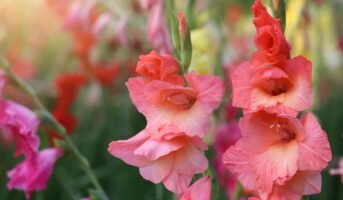Frangipani has been grown for centuries in India. During the 16th century, the Portuguese brought it to Europe. In the United States, it has not been grown commercially since the 1920s, when it was outlawed due to its use as an insecticide. Today, it is one of the most popular plants grown in homes. Read on to find out more about the uses of this plant and the best way to grow and care for it.
See also: How to grow and care for Rain Lilies?
What is Frangipani?
Frangipani is a tropical flowering plant that produces fragrant flowers. It is most commonly grown in the tropics, but it can also grow in temperate climates.
Frangipani is a shrub that grows in tropical and subtropical regions. The frangipani produces white flowers that are fragrant and can be used to make perfume or fragrance items. Additionally, it is used as a medicine.
Frangipani: Quick facts
| Plant name | Frangipani |
| Botanical Name | Plumeria |
| Family | Apocynaceae |
| Life Span | Perennial |
| Mature Size | 5 feet (1.5 metres) indoors, 32 feet (10 Metres) in the wild |
| Cultivation | Tropical And Subtropical Climates |
| Benefits | Oil, Fragrance, Medicine |
Frangipani: Physical description

Source: Pinterest
It is a small tree, with a height of about 20 feet and a spread of around 15 feet. The frangipani tree has small white flowers that bloom in clusters of three to five at the ends of branches. Each flower has five petals, which are also white with a yellow centre. The flowers have an oily scent that some people find pleasant, but others find overpowering.The fruit on the frangipani tree is similar to a banana. The outer part of its fruit is yellow, while the inner part is red. The fruit can be eaten fresh or dried for later use.
How to grow Frangipani?

Source: Pinterest
- The frangipani tree is an ornamental plant that is grown for its fragrant flowers and long-lasting fragrance. This plant makes an ideal indoor plant because it does not require much attention from the gardener.
- Frangipani plants can be grown indoors or outdoors depending on the climate where they are being cultivated.
- The plant requires full sunlight in order to thrive, but it must be watered regularly so that it doesn’t dry out completely during the summer months when there are no rainfalls.
Frangipani flower: How to care for it?

Source: Pinterest
Frangipani plants grow best in warm, moist soil that is well-drained. They need full sun for proper growth and will tolerate partial shade. The soil should be rich in loam or sandy loam with some clay content. The pH of the soil should be slightly acidic (pH 6.0-6.5).
The plant prefers regular water during its growth cycle but does not require watering during the winter months. However, it should be kept evenly moist throughout its life cycle so that roots will develop properly without damage from drought conditions.
Frangipani: Uses
- Frangipani plants have been used since ancient times to make perfumes and incense as well as for decoration purposes.
- They have also been used as medicine by traditional healers because they contain compounds called coumarins which have anti-inflammatory properties.
- Tinnitus, inflammation, headaches, and back discomfort are said to be relieved by it. Frangipani oil has astringent, purifying, and aphrodisiac properties. It soothes nerves and muscles as well.
- Frangipani cosmetic products rejuvenate your skin and make you look younger from the inside. The romance and invigorating smell of frangipani essential oil make it an effective ingredient in aromatherapy. Tinnitus, inflammation, headaches, and back pain have been reduced by using the treatment.
Frangipani: Toxicity
All parts of Frangipani are mildly toxic to both humans and animals. Hence, it’s advisable to keep the plan out of children’s and pets’ reach. The milky sap of Frangipani can serve as a skin irritant, sometimes causing blistering and rash. Ingestion of the bark or sap can result in vomiting and diarrhoea.
FAQs
What is the blooming season of frangipani flowers?
From December to April, Frangipanis can bloom.
How much water does frangipani need?
Winter watering is minimal for Frangipani, but spring and summer watering is necessary.
Can frangipani flowers be eaten?
Yes, there are several different dishes you can prepare with Frangipani flowers.
How to take care of frangipani?
Make sure they receive full sun and place them in a place that is protected from the wind in your garden. It grows well in warm-temperate climates, tropical climates, and subtropical climates.
Housing News Desk is the news desk of leading online real estate portal, Housing.com. Housing News Desk focuses on a variety of topics such as real estate laws, taxes, current news, property trends, home loans, rentals, décor, green homes, home improvement, etc. The main objective of the news desk, is to cover the real estate sector from the perspective of providing information that is useful to the end-user.
Facebook: https://www.facebook.com/housing.com/
Twitter: https://twitter.com/Housing
Email: [email protected]












